Here’s how to survive allergy season
You don’t have to suffer through spring allergies. In addition to taking allergy medication or any other steps your doctor suggests, you can enjoy the season and keep allergy symptoms from taking over your life with the help of these expert tricks.

Eat a healthy diet
Research suggests that antioxidants found in fruits, vegetables, nuts, seeds, green tea, and other foods and beverages may help fight inflammation inside your body, which could help control allergies. Other research, including a study published in 2017 in The American Journal of Clinical Nutrition, suggests that a diet rich in probiotics can also help alleviate allergy symptoms. “Probiotics protect against allergies, but they don’t work immediately so they’re most beneficial when taken long-term,” says Purvi Parikh, MD, an allergist and immunologist at Allergy and Asthma Associates of Murray Hill, in New York City. These are the 20 bizarre things you didn’t know you could be allergic to.
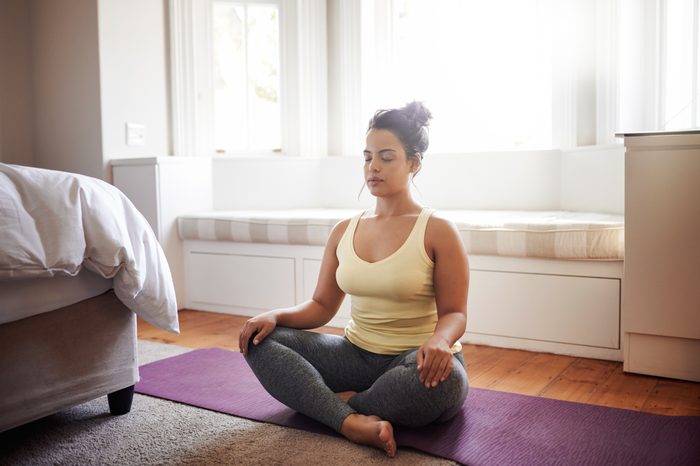
Reduce stress
Every time you’re confronted with a stressor, your body releases a cascade of stress hormones. They, in turn, send a volley of signals to various parts of your body to prepare it for action. If this happens day in and day out without physical release, stress can inflict its damage by affecting the very network that’s supposed to guard your health: your immune system. A compromised immune system increases your chances of allergic reactions.
“A weakened immune system can make allergies worse because if one part is underactive, another can become ironically overreactive as a compensatory measure,” says Dr. Parikh. Learning to control stress—or, at least, the way you react to stress—can help. These are the habits that make allergies way worse.
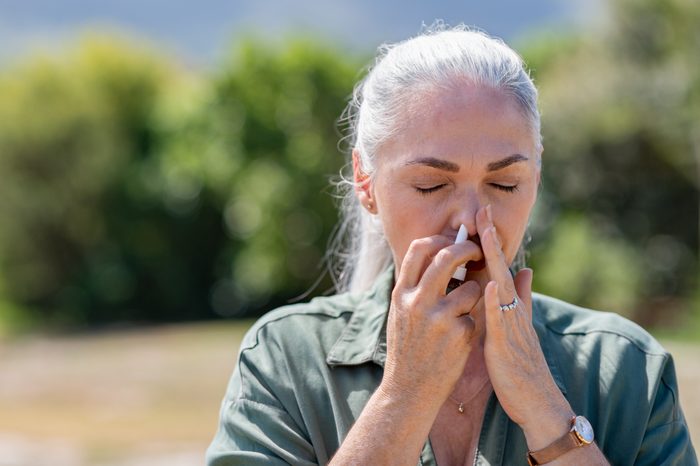
Complement your regular allergy medication
Besides oral antihistamines, nasal steroid sprays and nasal antihistamines are effective and safe, says Dr. Parikh. As for supplements, the only one “that has show any improvement in allergies and asthma is vitamin D,” she says. “Steam inhalation can help open your sinuses, but be careful with herbal teas as many—such as chamomile—cross-react with pollens and can make you more congested.” Tea lovers, check out the health benefits of green tea you haven’t heard before.
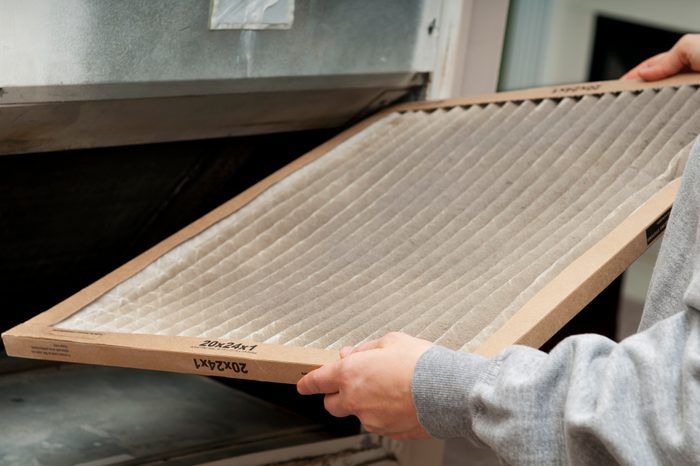
Keep air conditioning and furnace filters fresh
It’s important to change filters every three to six months, depending on the system, and use filters with a MERV rating of 12 or 13, says Stanley Fineman, MD, an allergist with Atlanta Allergy & Asthma in Atlanta, Georgia, and past president of the American College of Allergy, Asthma and Immunology. A MERV rating tells you how well the filter can remove pollen and mold from the air as it passes through. Consider these 12 natural allergy remedies that provide relief.

Run the air conditioner at home
Leaving doors and windows open is a good way to invite allergens and other irritants inside your home. (Same goes in the car, by the way.) Avoid using window fans to cool rooms; they can suck pollen indoors. Turn on the dehumidifier. You should keep humidity levels below 50 percent to kill dust mites, but above 30 percent to avoid making your home too dry.
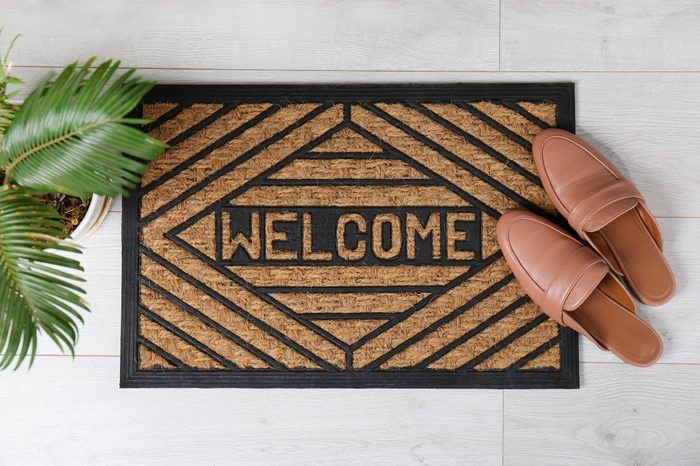
Make these front entrance changes
A doormat made of natural material (such as rope or other fibers) can break down and become a good environment for mites, mold, and fungus, which then get tracked into the house. Use a synthetic one, and wash all mats weekly. Also, clean dead insects from porch lights. As they decompose, they become an allergen source. Finally, put a rack by the front door for footwear. Encourage your family and guests to remove their shoes when entering. This will reduce the amount of dust, mold, and other allergens that are tracked in.
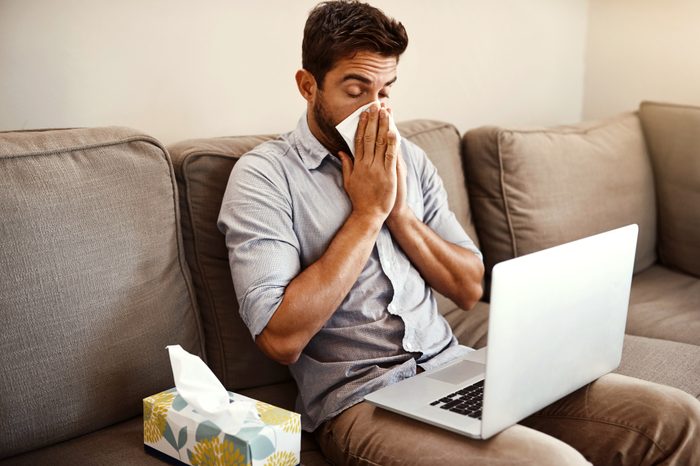
Detect your home’s hotspots
It’s counterintuitive, but the indoors can be worse for your allergies than the outdoors, says Dr. Fineman. “Both indoor and outdoor air pollution can be detrimental for allergy patients,” he says. “The trend to use fragrant products such as air fresheners and deodorizers can contribute to VOC (volatile organic chemicals) indoors.” Other culprits? Fabric-covered furniture and pillows, carpeting, tightly sealed windows, and warm, damp spaces can all contribute to allergies. Do a top-to-bottom inventory of your house to determine where allergens are congregating (bedding, carpet, damp areas, and air filters are likely spots) and clean them up. These are the myths about skin allergies you need to stop believing.
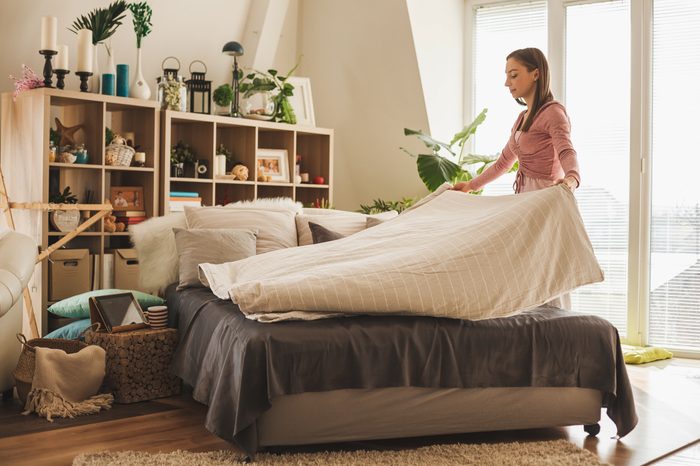
Spring clean your bedroom
“The bedroom is the most important room to keep allergen-free,” says Dr. Parikh. “Dust mites, mold, and animal dander are the biggest culprits.” To tackle the dust: Clean behind the bed and dressers, under the bed, and on the top of the ceiling fan. Always use a damp cloth since dry cloths just spread the dust around. Then strip your bed. Wash everything, including the comforter or blankets, in 130°F water. Wipe down the mattress with a damp rag. Bedroom items that can’t be washed, such as pillows, mattresses and box springs, should be covered in tightly woven, hypoallergenic dust-mite covers. “For dust mites, the encased mattress and box spring covers are very helpful in creating a barrier between dust mites and your nose and skin,” says Dr. Parikh. Here are 13 ways doctors allergy-proof their home.

Remove allergens from your closet
Keep clothing in zippered plastic bags and shoes in boxes off the floor. Forgo mothballs in favor of cedar chips, or store clean woolens in sealed plastic or airtight containers. You can also place garments in the freezer for several days to kill moths and larvae (yes, really). Also, check corners and walls for mold. You may have a leak you’ve never noticed because it’s in the back of a dark, crowded closet. Do you have a dust allergy? 7 smart strategies to get rid of the dust in your house.
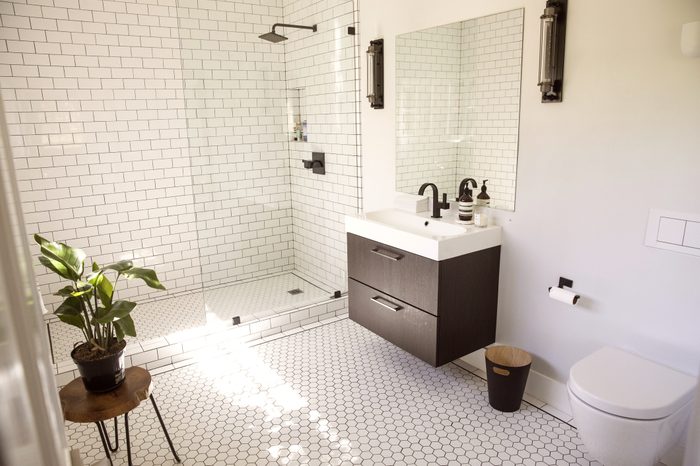
Get mold out of the bathroom
Check under and behind toilets to make sure there’s no mold growing because of condensation. Make sure toilets are installed properly so water doesn’t leak into the walls or floors, which could encourage mold. Also, wash the shower curtain in hot water once a month, or replace the liners every couple of months. You should also wash the bath mat in hot water every week. The dampness from stepping onto it wet from a shower can attract dust mites and cause mold growth. And run the exhaust fan or leave the window and door open when taking a shower or bath.

Get the kitchen under control
Put the contents of all open boxes of food in airtight containers to discourage insects. Clean the tray under the refrigerator with a bleach solution. It’s a mold magnet. Add salt to the drip tray to help reduce the growth of mold and bacteria. Don’t forget to check under the sink. Quite often, a sink sprayer leaks around the fittings, and water drips under the sink, soaking everything down there and creating a perfect environment for mold. Try these ways doctors allergy-proof their homes.

Make over your living room
If you can make the investment, get rid of your overstuffed couch. Replace it with leather or vinyl, which will not be as hospitable to dust mites and other allergens. Consider replacing the carpet. Solid-surface flooring, such as laminate, vinyl, or wood, is much less likely to harbor allergens. For the same reason, consider swapping fabric window curtains with simple shades. Check your houseplants. Put pebbles on top of the dirt to prevent mold spores from getting into the air too easily.

Go through the basement
Inspect every inch of your basement, including crawlspaces, for signs of dampness and mold. If you find any, clean the area with a bleach solution. Check all the belongings stored in the basement. Anything that is stored directly on a concrete floor—such as boxes, newspapers, clothing, or wood—is vulnerable to mold and rot from condensation. Measure the humidity with an instrument called a hygrometer, available in most hardware stores. You want a reading below 50 percent. These are the common triggers of spring allergies that aren’t pollen.

Shower and wash your hair before bed
Cleaning up before getting into bed helps remove pollen from your hair and skin, which reduces irritation. And make the bedroom a no-pet zone, especially if your pup has been outside, as pollen can cling to his fur, the same way it does your hair. “Keep your door shut so your pet can’t even cross the threshold,” suggests Dr. Parikh. “Also, getting rid of carpet and rugs helps as they trap many dust mites within them. HEPA air purifiers are extremely helpful for pet dander and mold, but dust mites and pollen are too small to be filtered.”
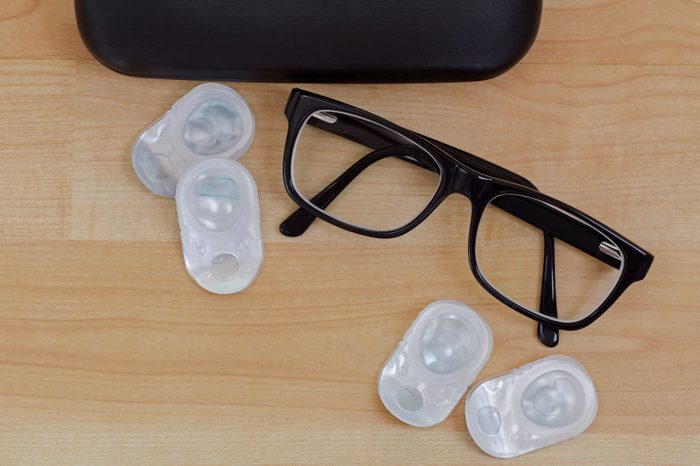
Ditch the contact lenses (temporarily!)
A study published in 2015 in Ophthalmology shows that dye eye—the culprit behind, red, itchy, watery eyes—strikes most often in spring, just as airborne allergens are surging. To avoid allergy eyes, Tania Elliott, MD, spokesperson for the American College of Allergy, Asthma, and Immunology, suggests swapping your contact lenses for eyeglasses. If you do wear contacts, “switch to daily throwaway lenses since pollen can get stuck to the lenses,” she says. “Eyeglasses can also shield your eyes, eyelids, and eyelashes from pollen. Pollen can get stuck in between the lashes, so people also find it helpful to do eye scrubs in the evenings with baby shampoo to get rid of pollen that may be sitting there irritating your eyes. Avoid rubbing your eyes.”

Minimize activities outdoors when pollen counts are at their peak
Pollen is typically at its highest point during midday and afternoon hours, so those who suffer from allergies and asthma should avoid going outside during those times of the day. Brush up on these allergy myths you probably still believe.
